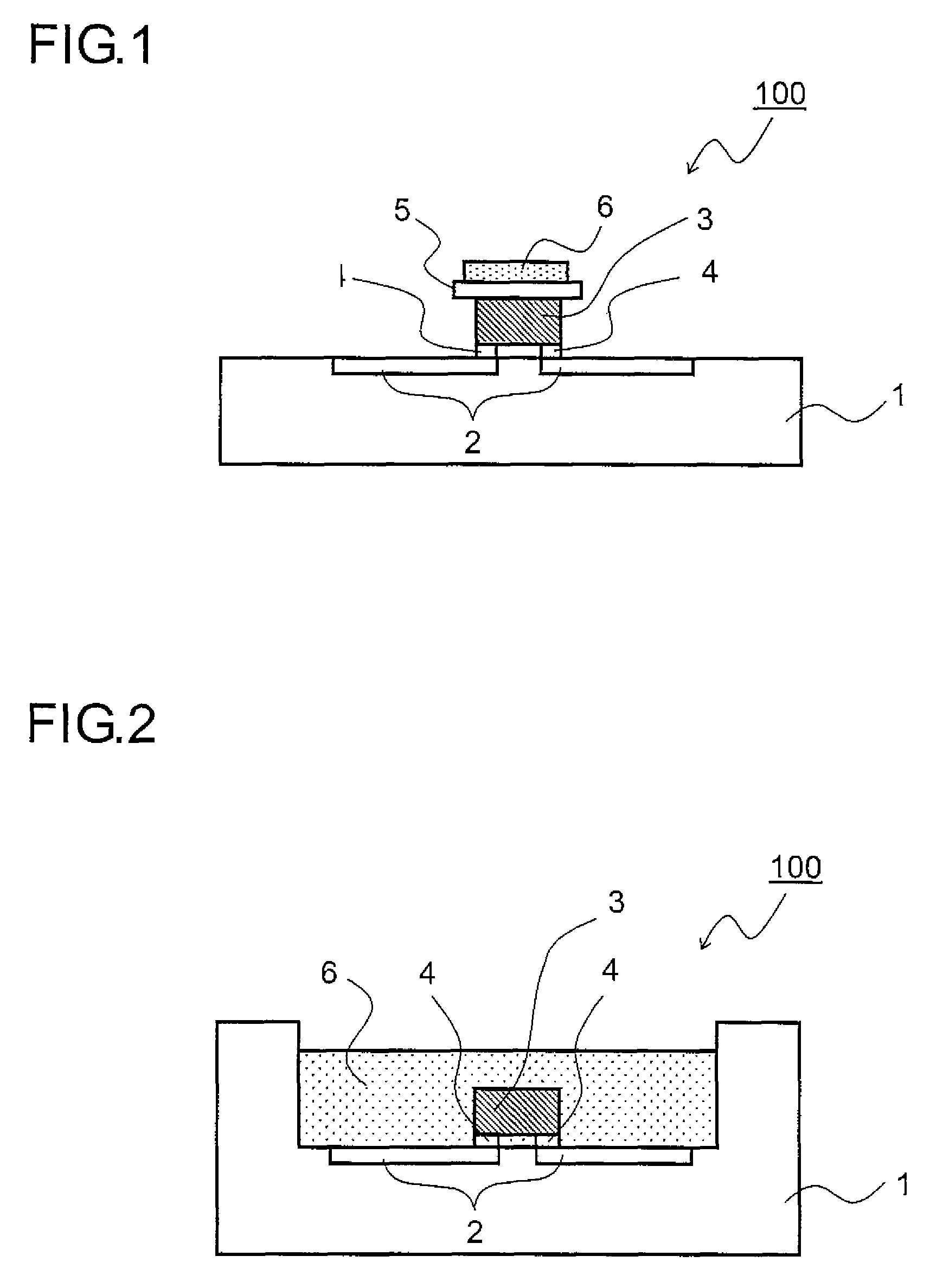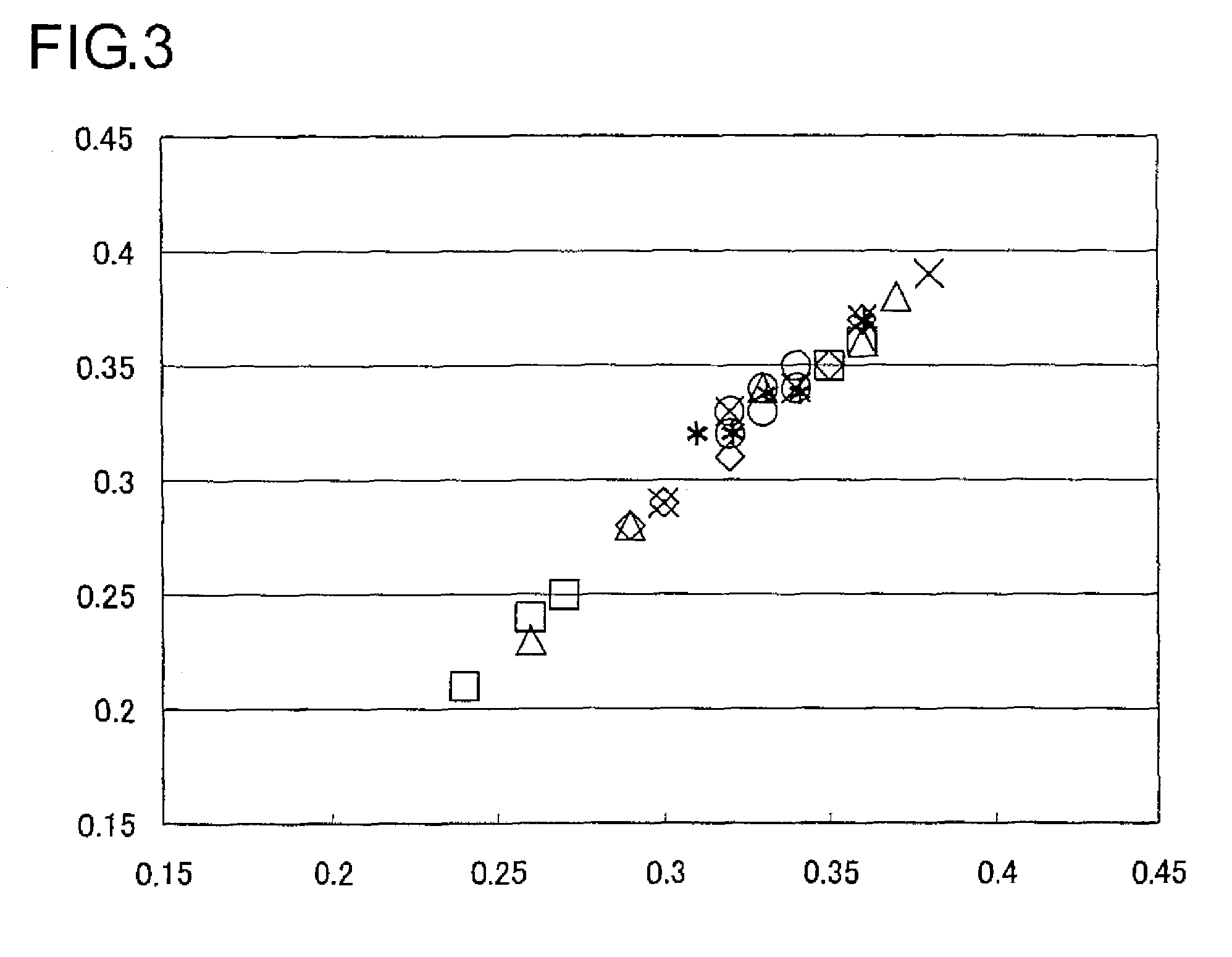Light-emitting device and method for manufacturing same
a technology of light-emitting devices and manufacturing methods, which is applied in the direction of lighting and heating apparatus, camera filters, instruments, etc., can solve the problems of color unevenness during light emission, and achieve the effects of effective suppression of color unevenness in the light-emitting devices, improved ceramic layer strength, and increased viscosity of mixtures
- Summary
- Abstract
- Description
- Claims
- Application Information
AI Technical Summary
Benefits of technology
Problems solved by technology
Method used
Image
Examples
working example 1
[0108]0.02 g lipophilic, surface-treated smectite (Lucentite SPN, manufactured by Co-op Chemical) was mixed and dispersed into 1 g of a polysiloxane dispersion (14 wt % polysiloxane and 86 wt % isopropyl alcohol). 0.6 g of the phosphor prepared in the preparation example described above, 0.03 g silicon oxide particulate having a median diameter (D50) of 25 nm (NanoTek Powder, manufactured by CIK NanoTek), and 0.45 g pure water were mixed into this dispersion, thus preparing a mixture.
[0109]The mixed amounts of polysiloxane, smectite, phosphor, and silicon oxide particulate were determined such that the sum of the percentages by weight within the ceramic layer after heating and polymerization would reach 100 wt % (the same also applies to working examples 2 to 11 and comparative examples 1 to 7 described below).
working example 2
[0110]A mixture was prepared by a method similar to that of working example 1, except in that the mixed amount of the phosphor was 1.1 g and the mixed amount of the pure water was 0.38 g.
working example 3
[0111]0.01 g lipophilic, surface-treated smectite (Lucentite SPN, manufactured by Co-op Chemical) was mixed and dispersed into 1 g of a polysiloxane dispersion (14 wt % polysiloxane and 86 wt % isopropyl alcohol). 0.7 g of the phosphor prepared in the preparation example described above, 0.03 g of silicon oxide particulate having a particle size distribution of 1 to 24 μm and a median diameter (D50) of 3 μm (Hi-Silica F3, manufactured by Nitchitsu), and 0.07 g of pure water were mixed into this dispersion, thus preparing a mixture.
PUM
| Property | Measurement | Unit |
|---|---|---|
| mean particle diameter | aaaaa | aaaaa |
| thickness | aaaaa | aaaaa |
| viscosity | aaaaa | aaaaa |
Abstract
Description
Claims
Application Information
 Login to View More
Login to View More - R&D
- Intellectual Property
- Life Sciences
- Materials
- Tech Scout
- Unparalleled Data Quality
- Higher Quality Content
- 60% Fewer Hallucinations
Browse by: Latest US Patents, China's latest patents, Technical Efficacy Thesaurus, Application Domain, Technology Topic, Popular Technical Reports.
© 2025 PatSnap. All rights reserved.Legal|Privacy policy|Modern Slavery Act Transparency Statement|Sitemap|About US| Contact US: help@patsnap.com



